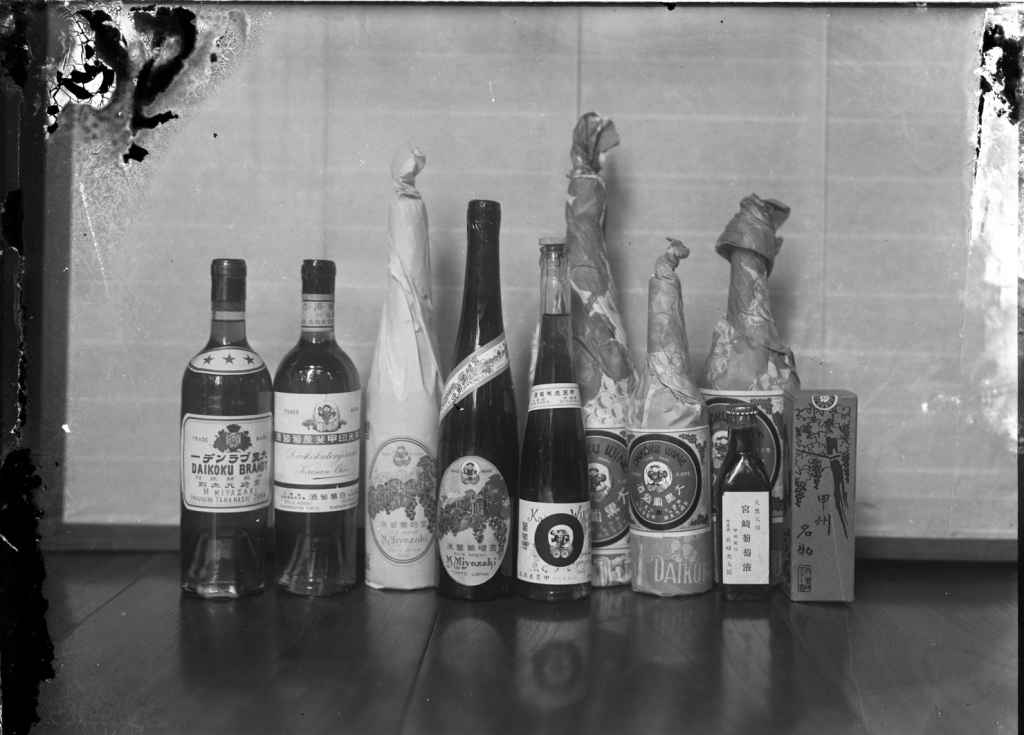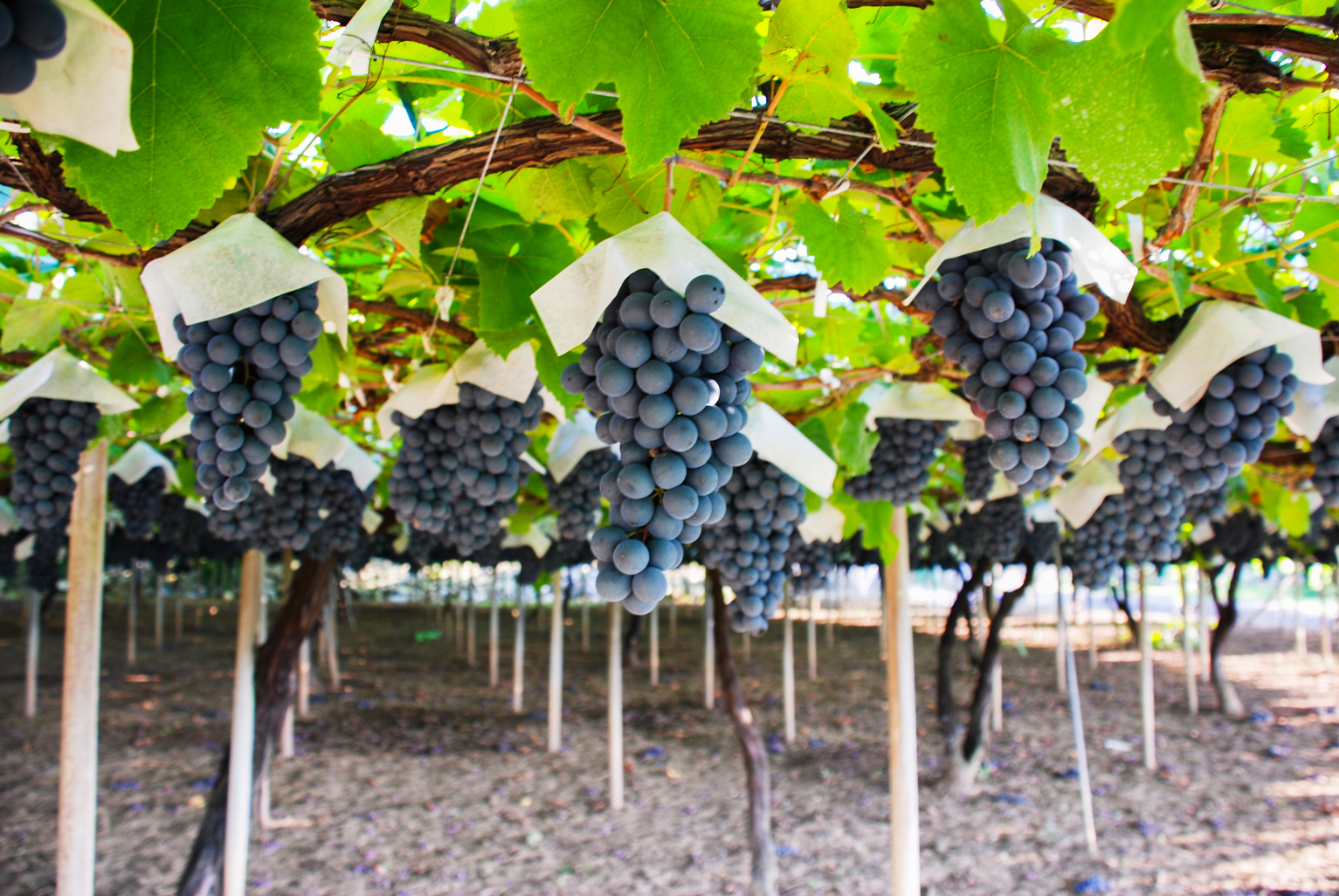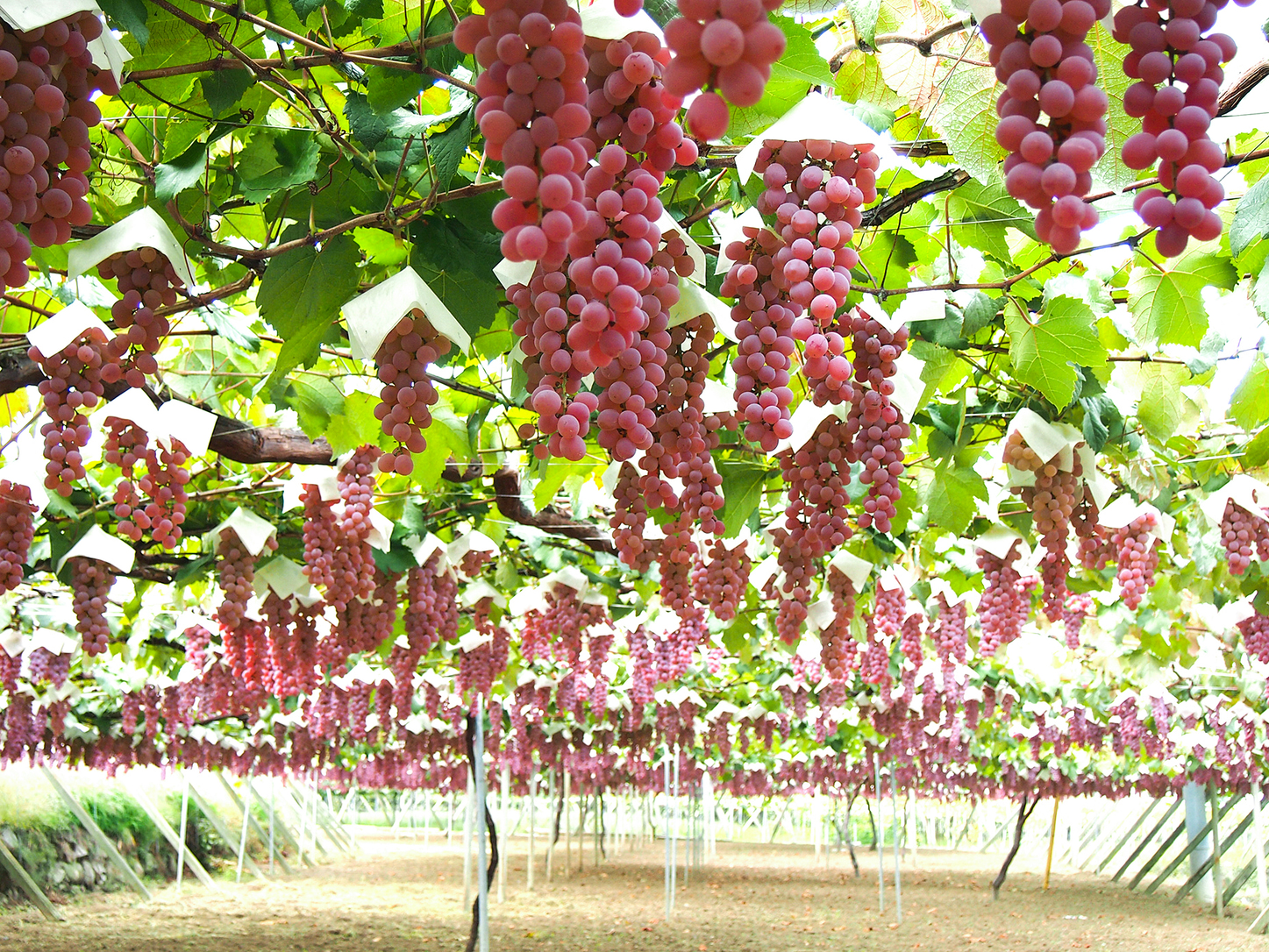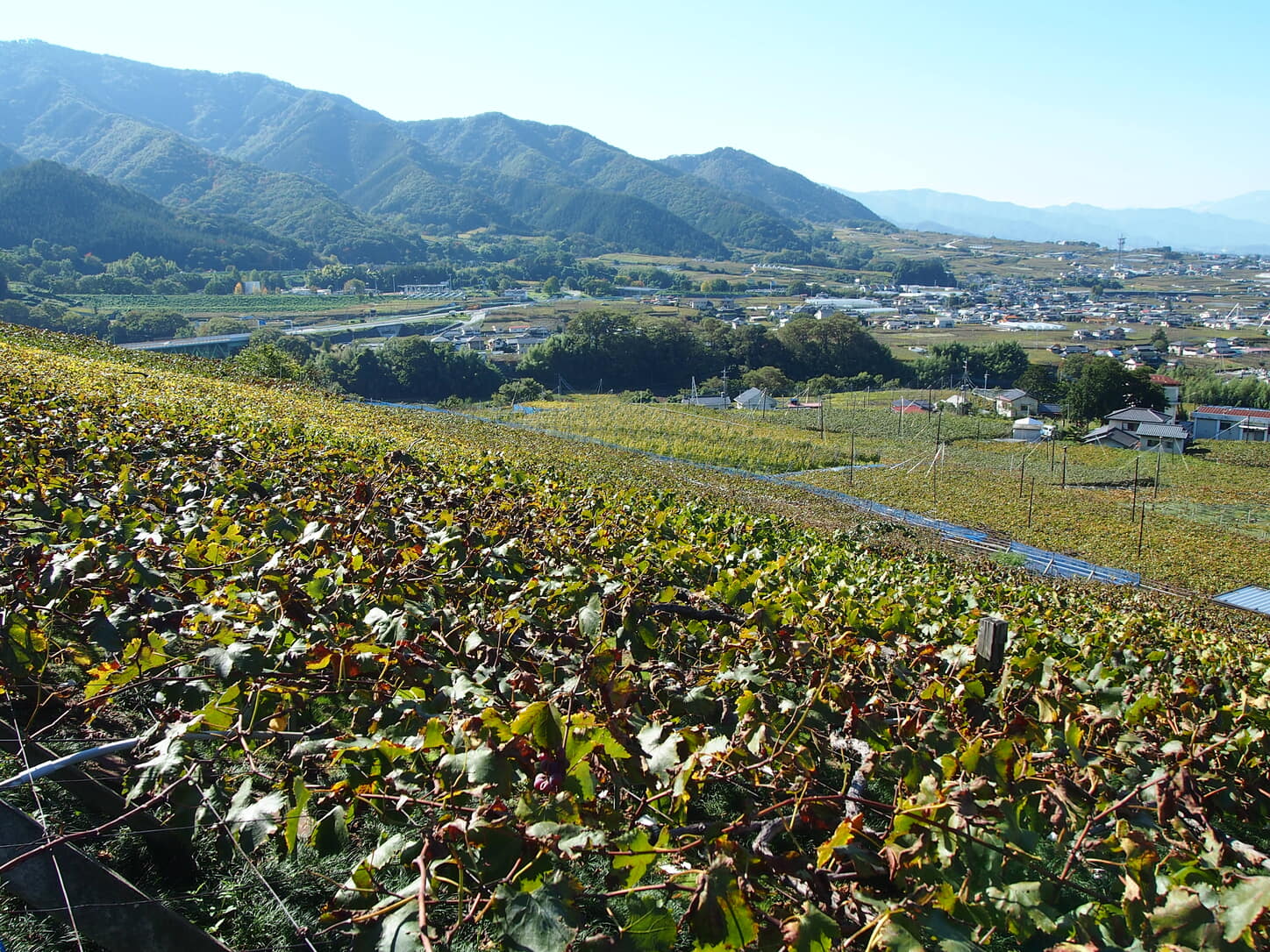As Japan’s biggest producer of wine, Yamanashi is known as Japan’s wine capital. The prefecture is responsible for over 40 percent of wine production in Japan, and its wine tourism industry is the most developed in the country.
Visitors are treated to winery tours, wine sampling, grape tasting and creative culinary pairings while surrounded by the gentle slopes covered in grape vines. After imbibing on a range of vintages (responsibly of course), they head off to a traditional inn for a soak in a mineral-rich hot spring and then turn in for the night.
It Starts with Koshu
Prior to the Edo Period (1603–1867), the only type of grapes grown in Japan were white grapes, known as Koshu grapes (Koshu being the old name for Yamanashi Prefecture). There are many theories as to the how and why of Koshu grape origins, but the existence of this variety is the main reason that Yamanashi remains a valued producer of Japanese wine to this day. The Koshu grapes grew especially well in the Katsunuma area, where the climate was well suited to grape cultivation.
Wine production in Japan was instigated by the Yamanashi Prefectural government in the Meiji Period (1868–1912), which — in a typical move for the time — aimed to create products equal to Western goods and diverge alcohol production away from rice, of which there was a shortage.
Trial and Error
In 1877, two agronomists of the Dai-nihon Yamanashi Winery, Masanari Takano and Tatsunori Tsuchiya, were sent to France to learn how to make wine. The pair returned three years later, ready to face the challenges that awaited.
Takano and Tsuchiya could not source European grapes to replicate the French viticulture they spent years studying, and instead used American grapes to brew 2,700 liters of wine the first year upon their return. Unfortunately, it did not suit the Japanese people, who had not acquired a taste for the beverage.
Just six years later, the winery was closed down due to typhoon damage and financial ruin. This did not deter Tsuchiya, who, alongside others — including Kotaro Miyazaki — reopened it as Kaisan Budoshu Winery. Alas, this too, failed. The wine did not suit the Japanese palate, and the winery was dissolved.
Soon after, in 1890, Miyazaki founded his own independent company, Daikoku Budoshu Company. He expanded his own wine business and adjusted both manufacturing and marketing to suit the local audience.
Around this time, he taught the art of viticulture to various keen apprentices, including Zenbei Kawakami from Niigata, who also went on to establish his own vineyard. Kawakami cultivated a red grape called Muscat Bailey A, which still is used to produce around 25 percent of wines from Yamanashi to this day.
Competition and Evolution
In 1903, across in Ibaraki, wine lover and Japan’s first sweetwine maker, Kamiya, whose son later studied winemaking in France at his bequest, planted 6,000 grapevines and established a modern winery called Ushiku Brewery (now Ushiku Chateau) which included a rail system to transport wine bottles and grapes. Not to be outdone, Miyazaki started a new winery the following year, called Miyakoen.
Miyakoen was a novel type of winery, with a fortunate location. It utilized modern viticulture techniques and, in 1913, the new Katsunuma Railway Station built next door gave Miyazaki a brilliant idea. He offered wine tasting and tours of nearby vineyards, signaling the beginnings of Yamanashi’s famed wine tourism.
The Miyakoen winery also strengthened the link between the local vineyards using the Koshu grape, cementing the town’s significance within Japanese viticulture.
By 1930, Yamanashi’s wine business exploded and the prefecture boasted 1,080 wineries. Notable establishments included Sadoya and Katsunuma, both of which are still going strong to this day. The wine industry was gradually flourishing, although its quality was not on par with its European counterparts.
Modern Wine Story
As a knock-on effect of the Tokyo Olympics in 1964, imports increased and interest in tourism and overseas travel expanded throughout the 1960s, leading to a boost in Japan’s awareness and fascination with the viticulture industry. This led to more investment and viability in the Japanese wine trade, with European wine seeing an explosion in popularity and local winemakers facing strong competition in wine quality for the first time.
Historically, Japanese wine differed from French, with the omission of a terroir label indicating the region in which it was grown, as many Japanese wines are made using imported grape concentrate or — in similarity to some sake production — the grapes are grown in prefectures from where the wine is processed. But, this is changing.
The GI (Geographical Indicator) regulation was introduced to Japan by the prestigious International Organization of Wine and Vine (OIV). The GI is used to highlight wines made in Japan from Japanese grapes, giving them a valuable label; literally, a factor to distinguish them from the rest and ensure top quality is clearly discernible from the crop. Yamanashi was the first region to receive recognition in 2013.
Since 2005, international interest in the Japanese wine industry (widely referred to as “Japan Wine”) has increased ten-fold, and Japanese wines are exported across the world.
Many local wines are paired with food in Japanese restaurants. Also, now that washoku has a UNESCO designation, Japan Wine, with its distinctive characteristics, is regarded as an important part of the Japanese culinary experience.
Wine Tourism
Miyakoen is a famed tip for wine lovers who visit Yamanashi. Even though Miyazaki’s original wine company, Daishoku Budosu, was acquired by a larger company in the 1960s and is now owned by Kirin, the former winery was turned over to the government and has been preserved as a museum.
The historical building provides information about Yamanashi’s wine journey up to the present day. It also houses rare and unique wine labels and marketing materials from over 100 years ago. Make sure to check out the video — a local promotional effort to entice people in Tokyo to try grape wines and juices — featuring vineyard workers in traditional Japanese garb and scenes from Japan of old.













